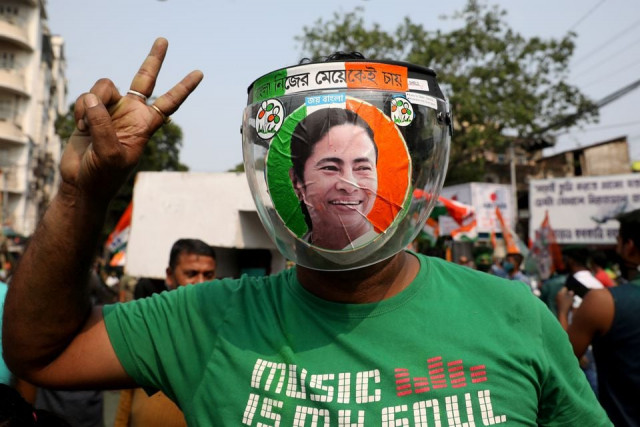The recent elections in West Bengal were closely monitored by both those who support and do not support Indian Prime Minister Narendra Modi. The result turned out to be crucial as the Trinamool Congress (TMC) party beat Modi’s Bharatiya Janata Party (BJP) on May 2.
Violent clashes broke out in West Bengal soon after the results were announced and at least nine people lost their lives. Both parties blamed each other for starting the violence while social media was rife with stories that indicated that both sides were to blame.
BJP’s social media team took it upon themselves to prove that they were specifically targeted because they were Hindus and spearheaded the call for the imposition of president’s rule in West Bengal. This started a wave on Twitter where many decided to support the call and tweets asking for the imposition of Article 356 started showing up.
A public interest litigation (PIL) was also filed in India’s Supreme Court asking for the same. The PIL, in my opinion, should be thrown out with extensive costs, especially since the court cannot order the president to take such an invasive step. It is true that the power to proclaim an emergency solely lies with India’s president, who forms an opinion based on the governor’s report. If the president then sees fit, they call upon the cabinet and the prime minister and it is with all of their advice that an emergency is declared.
The court cannot force a president to take these steps. The courts cannot advice nor report on matters outside their jurisdiction. The president can choose to update the court about a situation but the reverse does not happen as it may lead to the court breaching the doctrine of separation of powers.
So what does such a demand mean, especially when it comes to the legal system and the Indian constitution? The president’s rule is a constitutional power awarded to the executives to remove a state’s government and impose a central government for a certain time, highlighted in articles 352 to 360 in Part XVIII of the Indian Constitution.
The concept of such provisions was taken from the Government of India Act 1935 and its placement was a hotly contested issue in the constituent assembly as many feared that the inclusion of such an article would give the centre too much power over the states. In 1949, when Dr BR Ambedkar was asked whether this would allow the centre to interfere in state affairs under the guise of good governance, he answered,
“No. No. The centre is not given that authority…. that the proper thing we ought to expect is that such articles will never be called into operation and that they would remain a dead letter. If at all, they are brought into operation, I hope the President, who is endowed with all these powers, will take proper precautions….”
He termed this article an ‘invasion’ and repeatedly used the term to highlight that the article may only be invoked when there are absolutely no other options to bring about constitutional stability. Article 352 says that the article may only be imposed in case of an armed rebellion or against external aggression, while article 355 further specified armed rebellion and internal disturbance. Article 356 also states that the rule can only be invoked after the total ‘failure of the constitutional machinery’. The clauses all seem to suggest that unless there is a disaster akin to the entire country falling, the rule cannot be invoked.
Indian courts took a similar view during the landmark case ‘SR Bommai vs Union of India’, where the Supreme Court declared that in order for the president’s rule to be imposed, internal disturbances need to be of a magnitude where they have destroyed the country and there is absolute chaos.
In fact in 2020, the Indian Supreme Court entertained a petition asking for Indira Ghandi’s president’s rule to be declared unconstitutional as many citizens were treated brutally and normal rights were suspended for months. The bench agreed that the president’s rule should not have been imposed and that it was an assault on the constitution. During Ghandi’s time, the president’s rule was imposed citing internal disturbance as the cause, much like the petition filed in the Supreme Court about West Bengal.
With this, we must ask then, has the situation in West Bengal actually deteriorated to such an extent that a president’s rule must be enforced? The loss of lives is extremely saddening but it is not due to the breakdown of the constitutional machinery but more a breakdown of the police force and the local administration. The election commissioner should definitely be questioned but these conditions do not warrant a president’s rule.
Imposing a president’s rule may not improve the situation in West Bengal but it can be used by the centre to thwart out the state's autonomy while also setting back the democratic process. It is such emergencies that eventually contribute to the breakdown of state machinery and have the potential to end in complete chaos and a lack of concern for human rights. Short-term political goals and vendettas will only further damage the heterogeneous nature of India.



COMMENTS
Comments are moderated and generally will be posted if they are on-topic and not abusive.
For more information, please see our Comments FAQ